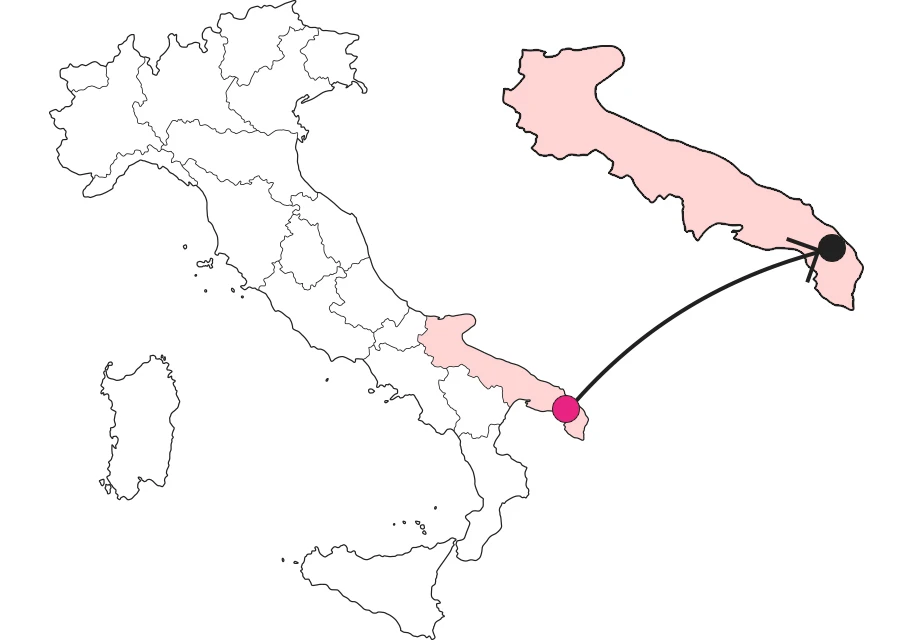SHARRYLAND


The Coelimanna Crypt of Supersano. A Wonder to be Saved
Witness the presence of Basilian monks in the territories of the Serra di Supersano

Where is

Along the pilgrims' ways
From Brindisi, early medieval pilgrims could reach Leuca by walking along the ridge of the Serra di Supersano, the "Via misteriosa" mentioned by historian Scigliuzzo. The path was dotted with places of worship: the church of S. Maria di Sombrino, the sanctuary and Crypt of Coelimanna, the Madonna della serra in Ruffano and so on to Leuca.
Today, however, if a pilgrim on his way to Leuca were to stop at the Crypt of the Coelimanna, great would be his disappointment: the small door barred, the exterior propped up, no one around... The Crypt, a priceless asset that has guarded history, art and faith for 1,000 years, is in danger of collapsing and disappearing forever. Due to our neglect.
 Medieval frescoes © B. Contini
Medieval frescoes © B. ContiniOrigins
When Basilian monks fled Constantinople in 786 to escape persecution against the iconoclasm of Leo III Isauricus, they found refuge in the caves of Salento, Puglia and southern Italy. In Supersano they adapted the caves on the slopes of the hill, inhabited by man since prehistoric times, as their home. Over time they frescoed the walls of their hermitages with figures of saints and inscriptions in Latin and Greek.
When one could enter
The Coelimanna crypt, dating from the year 1000/1200, is carved into the rock; the interior is dark and silent, divided in two by a Baroque altar. The floor is beaten earth with traces of earthenware, and the ceiling is painted with stars. Byzantine frescoes of excellent workmanship depicting saints adorn the walls at the entrance to the crypt. In the Baroque altar room, on the other hand, the rich wall paintings have a decorative character. Today these frescoes are covered with mold caused by seepage and moisture and myriads of gnats attacking the colors.
The frescoes
Two saints greet us at the entrance, right hand blessing in the Greek manner. The one framed in half-length, almost as if he were an icon, is St. Nicholas, as the inscriptions in Greek (Nikola) and Latin (S. Nicolaus) reveal. The wrinkles on his forehead, the large brown eyes, the thin nose, and the wispy beard give his figure a special majesty. The saint wears rich Greek episcopal vestments and holds a gospel, closed. Next to him, the other blessing figure is possibly St. John the Evangelist. He too wears sumptuous robes and holds a Book, but this time the Book is open and facing us.
Among the others, three frescoes depict the Madonna and Child. One, in particular, holds a fruit in her hand, tenderly bringing the sacred back to the everyday.
 In the foreground is St. Nicholas; to her left is St. John the Evangelist. © B. Contini
In the foreground is St. Nicholas; to her left is St. John the Evangelist. © B. ContiniAt risk of collapse
The crypt has been closed since 2009, when the waters of a heavy rainstorm, descending from the hillside, brought down a drystone wall near the entrance. This was the first wake-up call. In the following years, again due to heavy rainfall, large seepage and a slight landslide occurred, so much so that in 2017 a slab of rock broke off from the ceiling of the Crypt, making it unusable. The following year, to prevent collapse, steel props were put in place both inside and outside the Crypt, which has been abandoned ever since.
What to do.
In May 2022, the Municipality of Supersano submitted a restoration project to the Region. We hope that the project will be approved urgently and action will be taken without delay.
Enter the Map of Italy's Undiscovered Wonders and find treasures where you least expect it... Inspire, Recommend, Share...
Collections
The Map thanks:
Enter the Map of Italy's Undiscovered Wonders and find treasures where you least expect it... Inspire, Recommend, Share...
Where is

Collections

